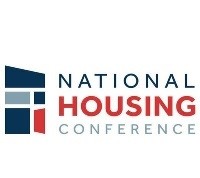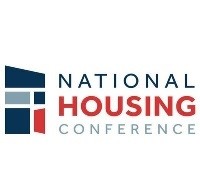TAMPA – April 10, 2014 – (RealEstateRama) — With the annual hurricane season prediction coming this week from Colorado State University and the start of hurricane season only eight weeks away, the Insurance Institute for Business & Home Safety (IBHS) urges residents to start their hurricane preparedness efforts now. Regardless of whether or not a busy season is predicted, IBHS reminds residents that it only takes one storm to significantly affect their lives and property, and no prediction can ensure the season will be cyclone-free.
IBHS also reminds residents that while the Gulf and Atlantic states are the most at risk of damage from a tropical system, hurricanes and tropical storms can travel far inland, causing high winds, heavy rain and tornadoes in areas not expecting the damage. Hurricane Hugo, which struck 25 years ago in South Carolina, maintained hurricane force winds all the way inland to Charlotte, North Carolina, and caused damage in West Virginia, Pennsylvania, Ohio, Virginia and Connecticut.
IBHS recommends property owners focus on five areas to protect their property against the high winds and wind-driven rain from hurricanes. Additional information is available on IBHS’ hurricane resources page.
Recommended Property Protection Actions
1) Strengthen Your Roof
The roof is a building’s first line of defense against Mother Nature, making it one of the most vulnerable points on a home or commercial building. Roof cover damage occurs in the vast majority of wind-related claims, and a compromised roof can allow high winds and wind-driven rain to enter your building, and cause major damage. Consider these roof protection projects, many which will require a professional roofing contractor.
Make sure your roof deck (sheathing) is strongly fastened to the roof framing members. If you are re-roofing, make sure the roof cover is removed down to the deck and the contractor re-nails the sheathing with ring-shank nails, if it isn’t adequately fastened. If you are not ready to re-roof, consider using an adhesive system that can anchor down the sheathing to the framing.
Seal the roof deck to minimize water getting into your attic if the roof cover is blown off. If you are re-roofing, have roofing tape applied over the joints between the sheathing or a self-adhering membrane over the roof deck.
Re-adhere loose shingles with roofing cement to prevent them from blowing off and exposing your roof decking to wind-driven water.
If you have vinyl or aluminum soffit covers, strengthen their attachment to the walls and fascia. If the soffit is more than 12” wide, make sure the middle is supported. When soffit materials are blown off, wind-driven water can enter the attic, cause ceilings to collapse and damage the home’s interior.
Additional roof strengthening information is on IBHS’ Roofs webpage.
2) Protect Your Building’s Openings
Protect all openings from high wind or flying debris damage. Failure of a large window or door can result in pressurization inside the building, and potential damage. Attention should be given to all windows, entry doors, sliding glass doors, and garage doors.
Choose permanent window and door protection, such as shutters or roll-downs, or install permanent fasteners before storm warnings, and pre-cut shutter panels so they can be put in place quickly. IBHS has a shutter selection and installation guide with more information.
If your garage door doesn’t have a pressure rating sticker, have it evaluated and if necessary, have a garage door bracing system installed to prevent wind from blowing in the door.
Whatever opening protection product you choose, make sure the product has the proper product approvals for wind pressure and large-missile impact from flying debris and objects.
Seal openings, cracks and holes on the outside of your building to prevent water from getting inside your home from wind-driven rain. Fill holes where wires, cables and pipes enter and exit the house and seal around electrical boxes and circuit breaker panels. Seal cracks around wall outlets, dryer vents, bathroom and kitchen vents, and wall lights.
3) Ensure Your Building Is Tied Together
Create a continuous load path in your building, which means tying the roof to the walls and the walls to the foundation. This is important because if the connections between the roof and walls are weak, high wind forces may cause the roof and walls to give way. Once the roof blows off, the entire structure can collapse within seconds.
During renovation or construction, have your house tied together with metal connectors, such as hurricane straps, clips or ties.
More information is available on creating a continuous load path in your building.
4) Properly Elevate Your Building
Learn what your property’s base flood elevation (BFE) is from your local building department and check your property survey to find the elevation of the lowest floor where you live or store things that would be damaged by a flood.
If this floor is not built above the BFE, consider elevating your building. If that is not possible, relocate utilities and valuable belongings, at least a foot or up to three foot per IBHS recommendations, above your property’s BFE to reduce damage from flooding.
If you live near the coast, take into consideration the possible effects of storm surge. Any enclosed areas below the BFE (and preferably three feet above the BFE) should have break-away walls, and all utilities and equipment should be located well above the BFE. If storm surge hits your building, any flat surfaces, such as walls, facing the surge will probably be knocked down or knocked out, and the whole house could be lost.
5) Prepare Your Surrounding to Reduce Damage
Limit possible sources of wind-borne debris by surveying your building’s surroundings before a storm.
Replace gravel/rock landscaping materials with a softer material, such as shredded bark or mulch.
Trim trees and shrubbery away from structures and remove any weakened sections of trees that might easily break off and fall onto structures.
Remove yard objects, including lawn furniture, planters, bird feeders, and decorative objects, before a storm to prevent them from becoming flying missiles.
# # #
About The Insurance Institute for Business & Home Safety (IBHS)
IBHS is an independent, nonprofit, scientific research and communications organization supported by the property insurance industry. The organization works to reduce the social and economic effects of natural disasters and other risks on residential and commercial property by conducting building science research and advocating improved construction, maintenance and preparedness practices
Media Contact: Stacy Williams, APR, IBHS, Phone: (813) 675-1045 (Office) (813) 486-6372 (Mobile), Email:

















